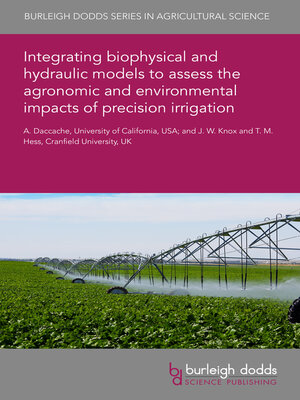Integrating Biophysical and Hydraulic Models to Assess the Agronomic and Environmental Impacts of Precision Irrigation
ebook ∣ Burleigh Dodds Series in Agricultural Science
By Dr Andre Daccache

Sign up to save your library
With an OverDrive account, you can save your favorite libraries for at-a-glance information about availability. Find out more about OverDrive accounts.
Find this title in Libby, the library reading app by OverDrive.



Search for a digital library with this title
Title found at these libraries:
| Library Name | Distance |
|---|---|
| Loading... |
Precision irrigation offers scope to save water, improve yields and support the sustainable intensification of agriculture. It could also contribute to the sector's transformation to reduce the environmental impacts of food crop production linked to nutrient leaching and greenhouse gas emissions. Whilst many models exist to inform decision-making in irrigated production, most still ignore the fundamentally important impact that in-field heterogeneities and irrigation non-uniformity have on crop growth and productivity. Given the importance of adequate soil water for crop development and nutrient uptake, this chapter reviews current approaches to spatially simulating crop growth in-field, and the challenges of integrating biophysical and ballistics-based water distribution models to quantify the impacts of precision irrigation interventions. Different approaches (deterministic and empirical) to simulate irrigation water distribution are briefly explained, and a procedure that couples a dynamic ballistic model with a crop growth model is described.







